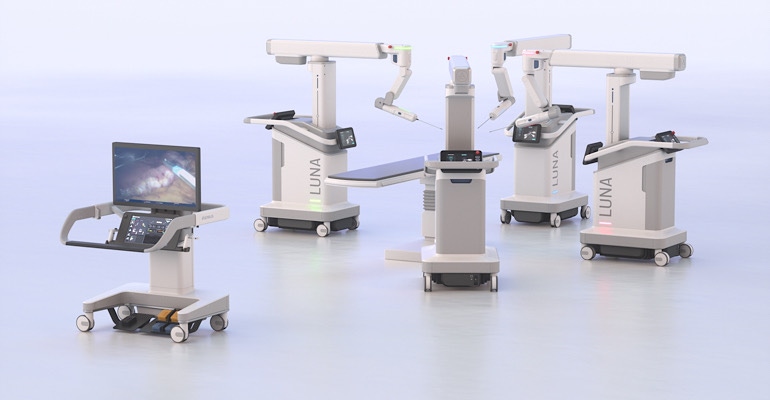Asensus Surgical's Anthony Fernando gives a Behind-The-Device look at the company's new Luna Surgical System.
March 9, 2023

The Luna surgical system from Asensus Surgical is a second-generation digital surgery platform that builds on the technology of the company’s successful Senhance surgical robot.
“Luna is far more than a robot,” Anthony Fernando, Asensus president and CEO, told MD+DI. “The system is smart. Even if you tell it to move left or right, it moves very safely, with significant knowledge and awareness. We call it performance-guided surgery as opposed to robotic surgery.”
Conceived and designed over the past four years, Luna comprises three major components: three or four manipulative robotic arms to hold surgical instruments; a surgeon console to control the arms; and surgical instruments that are attached to the end of the robotic arms to perform the surgery.
Fernando expects that Luna will become commercially available in 2025. “Currently, we have over 70 instruments in our Senhance platform,” he said. “A full instrument set will be included with Luna to offer monopolar energy, bipolar energy, and passive instrumentation.”
Initially, Luna will target gynecology, general surgery (including bariatric and colorectal), and urology.
“To do these procedures, Luna provides the dexterity and the triangulation of instruments in order for the surgeon to be able to maneuver in tight corners, so the surgeon can reach the target anatomy,” Fernando said. “Then, once the surgeon reaches the target anatomy, Luna provides best-in-class stability, strength, and precision for the surgeon to be able to cut and dissect and move internal anatomy around without experiencing vibrations.”
For bariatric procedures on overweight patients, significant strength is needed to manipulate an instrument penetrating thick tissue and layers of fat, whereas pediatric patients undergoing general surgery procedures require delicate manipulation.
“Luna is able to accommodate a wide spectrum of force through a proprietary haptic feedback and a force-sensing mechanical component,” Fernando said. “We possess intellectual property (IP) to measure the incision force in real-time and then control the instrument appropriately to ensure that the instrument does not exert too much lateral force on the patient’s abdomen for these procedures.”
Digital fulcrum (pivot) is achieved by force sensors at the end of each arm that measure all 6-sphere coordinates.
“By measuring the force, Luna knows exactly where the instrument enters the abdomen, for example,” Fernando said. “The surgical system also sets that point in 3D space to make sure the point becomes the pivot point for the instrument.”
After the force is measured and the fulcrum point is rendered in 3D space, the surgeon can manipulate the instrument “any which way he wants,” Fernando said. “The robot does not actually exert excessive lateral force on the incision.”
Luna also has built-in augmented intelligence (AI) and machine learning capabilities.
“The surgeon is fed information about thousands of prior surgeries and best practices,” Fernando said.
These intelligent features are possible through the company’s Intelligent Surgical Unit, which is contained in a small box attached to Luna.
“Surgeons are provided real-time, augmented intelligence to ensure the surgery is performed in the best way possible and the safest way possible, in a predictable fashion,” Fernando said.
About the Author(s)
You May Also Like




